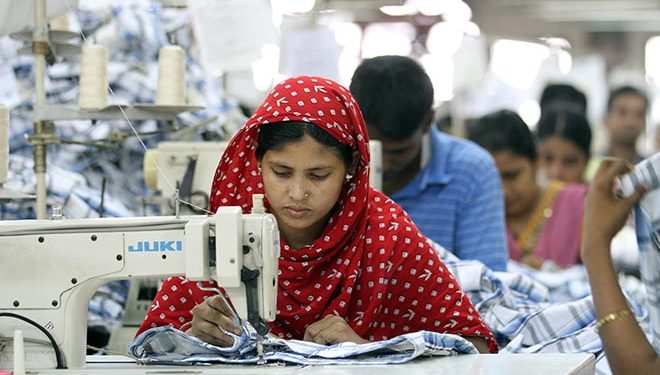Dhaka, Oct 28 (DeccanHerald) – Fifty years ago, when Pakistan’s pillaging, rape and loot killed an estimated five million people and Bangladesh came into being following the 1971 war with India, it was impossible even to imagine the economic miracle now underway in that country.
A sharp economic recovery from Covid indicates that for Dhaka, the good times may have just begun. Standard Chartered, a global bank, said in its latest report that the country would grow at over seven per cent in fiscal 2022. More importantly, this rate is likely to be sustained, making it a $500-billion economy by the fiscal year 2026.
For similar articles, join our Whatsapp group for the latest updates. – click here
It is significant to comprehend that the Bangladesh economic miracle is not at some future date. It’s already happened. Its per capita gross domestic product (GDP) in 2020 was $2,227, while India clocked $1,947 and Pakistan only $1,543.
Three key factors have propped this miraculous growth. First, Bangladesh has taken a robust approach on its comparative strengths, mainly in apparel and basic pharmacy products and fisheries, to build a global scale.
READ: Bangladesh Prime Minister wants a global ‘climate prosperity plan’ not empty pledges
The apparel industry has been now nurtured in Bangladesh for about thirty years. This has seen state-backed subsidies for power looms and a coordinated effort leveraging lower wage and power costs as China has shifted to value-added items in the apparel chain. Today Bangladesh is the world’s second-largest apparel exporter after China, with exports of about $50 billion in 2019. The ability to attract industries such as apparel and basic pharmacy has also seen a broader social goal of job creation, and thus, the economic growth has seen a deeper uplift of the poor, a far broader return on investment for every dollar.
Second, Bangladesh has leveraged a small base advantage in labour costs. While the monthly labour cost for apparel in China is an estimated $600 (Rs 45,023 approximately), in Bangladesh, it is around $190 (Rs 14,257 approximately). Bangladesh has relatively high female participation in the labour force. A gender gap report by the World Economic Forum in 2021 said that female labour force participation was around 34 per cent, which is far higher than India, where it is estimated to be only 22 per cent. This positions Bangladesh as a country that can transform economic growth to social equality faster than many developing countries.
READ: The challenges handloom creations face from commercialization
The Bangladesh government has assiduously cultivated global textile quota privileges that give it export preferences given its low-income status. Bangladesh has also kept pace with trends in both manufacturing equipment and technical skills of the workforce.
Apart from being an emerging global leader in apparel, Bangladesh is also leveraging its young overseas workforce to its advantage. With yearly remittances of $20 billion (Rs 1.5 lakh crore) funnelling back home, small businesses and tertiary industries such as aquaculture and transport have consistently seen double-digit growth for over a decade now. Finally, Bangladesh has seen promising returns in microfinance, leading to a small business revolution and a boost to equitable growth.
However, even with the staggering growth, risks are on the horizon. The biggest risk for Bangladesh is political, and the rise of Islamic fundamentalism threatens the basis of its equitable development. If not dealt with an iron hand, it could scare away female labour force participation and foreign investment.
READ: Bangladesh exports up 15% as global demand for garments rebounds
The second risk for the Bangladesh economy is its over-reliance on just one industry – apparel – for over 85 per cent of its exports. While efforts are being made to change this, the pace of capital expenditure in footwear and pharmacy, two promising sectors, is inadequate. Bangladesh is becoming complacent in its growth, and that could be a risk.
The third risk comes from India. The Narendra Modi government has been incentivising apparel exports for the last three years, and it is showing results on the ground. This year India’s apparel exports rose 22 per cent compared to Bangladesh at 18 per cent. If cotton and yarn prices continue their upward trend and Indian industry incentives add up to a pushback, in that case, the sheer size of Indian production capability could undercut Bangladesh exports over the next five years. This is especially true because as Bangladesh moves out of the least developed countries, it will lose some crucial quota benefits in trade.
In sum, Bangladesh’s economy has been miraculous in its growth – Prime Minister Sheikh Hasina and her team need more tricks up their sleeve to add magic to the miracle.
Subscribe to our Whatsapp channel for the latest updates from around the world





























































